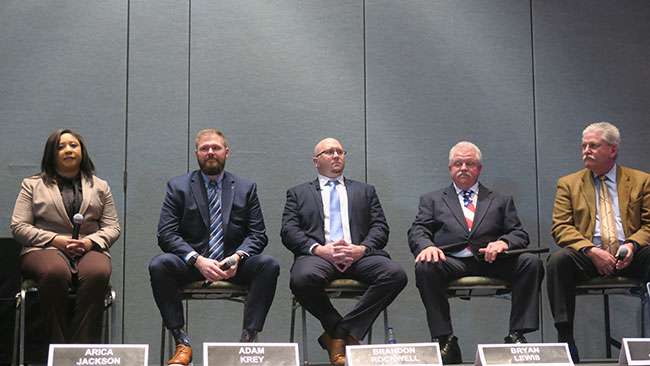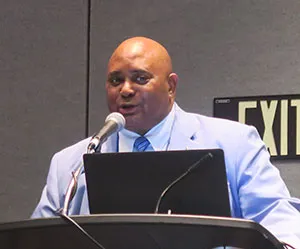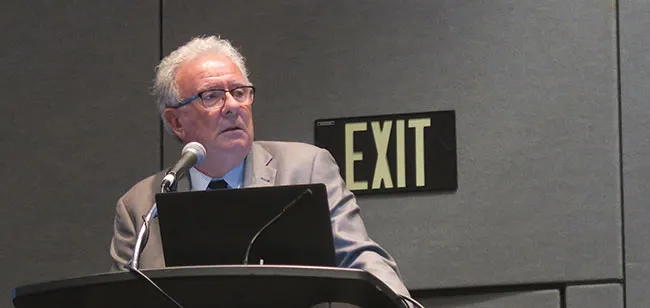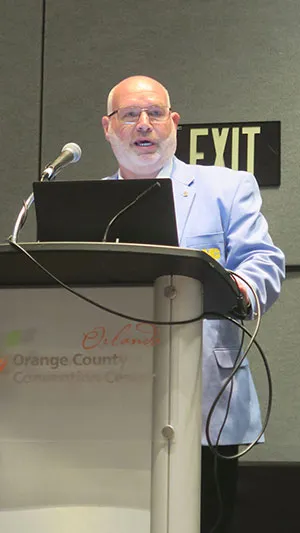Features Editor
Panel Uses Root Cause Analysis to Assess Recruiting, Retention

[Stay on top of transportation news: Get TTNews in your inbox.]
ORLANDO, Fla. — Five people are about to sit in a conference room at XYZ Fleet to determine why it has been difficult to recruit and retain their technicians.
That was the scenario for the fictional trucking company during a technical session at the Technology & Maintenance Council Annual Meeting and Transportation Technology Exhibition on March 1.
The panel was led by moderators Homer Hogg of TravelCenters of America, David Kegley of Ryder System Inc. and George Arrants of ASE, with speakers Arica Jackson of UPS Inc., Adam Krey of Navistar, Brandon Rockwell of TA, Bryan Lewis of ASE and Jim Johnston of US Foods.
Titled “Recruiting and Retention of Technicians Through Root Cause Analysis,” the session depicted a meeting involving the speakers who were XYZ Fleet executives as they attempted to reach a consensus on how they could hire and keep technicians. The group would use the 5-Whys exercise process to properly analyze the issue.
The 5-Whys problem-solving exercise forces participants to repeatedly ask “Why,” preferably five times to identify symptoms that can lead to the root cause of a problem.

Hogg kicks off the panel. (Anneliese Mahoney/Transport Topics)
“This is a narrow view,” exclaimed Hogg as he began to describe the scene. “This is a tool that you could use, but there many more that are helpful.”
Before the “meeting” began, Arrants gave an industry “state of the union” assessment on recruitment and retention, noting that fleet managers need to share accountability if they continue to hire the younger generation of technicians with unreasonable expectations.
“We throw these young people to the wolves and expect them to be successful,” he said, adding that through accredited programs such as ASE, nearly 70,000 students are prepared to enter the workforce. However, 18% of them most likely would work on commercial trucks. Arrants ended with a warning for the attendees.
“If you are not involved in our local programs, you are part of the problem,” he said. “You got to get out of your office, go down the street and get into that program.”

Arrants addresses the group with a "state of the union." (Anneliese Mahoney/Transport Topics)
Kegley started the XYZ Fleet meeting with the speakers as the fictional boss, before explaining to the audience that “the boss should never be the facilitator.”
“I, as a human, have a tendency to think I know everything, and I’m going to solve the problem,” he said. “But, in this case, we are not trying to find a solution. The most important step is to describe the problem.”
The five speakers acted as members in the boardroom attempting to get to the root cause of their issue. A sample budget showed that the company was losing $800,000 every six months due to employee turnover, to which Jackson described as “unsustainable.”
Lewis was fictionally accused of being hard on the technicians, while Johnston implied a lack of work ethic. During the process, Kegley noted to the audience that the goal of the discussion was not to pass blame but to arrive at a problem statement that is quantifiable.

Kegley moderates the discussion about the fictional company. (Anneliese Mahoney/Transport Topics)
“If I’m doing this as the boss, I do not want to influence their decisions or ideas,” he said. “You may have two or more problems at the same time, but you have to pick one.”
Kegley added that owners and managers should not be discouraged by these hard discussions.
“You may say this is consuming, but don’t think ‘What if I just don’t do nothing’ … that’s not a good idea,” he said.
The group eventually agreed that there was an issue in recruiting their talent. Once the consensus was made on the problem, they moved forward to ask why. The group members asked several questions to each other such as, “Why don’t we take advantages of the opportunities at the trade show?” and “Why isn’t there a clear vision to convey to the technical schools?”
The session brought to light many issues that have plagued the industry for several years. As the fictional board members wrapped up their meeting, Kegley said that figuring out a solution will ultimately start with asking why.
“It is a simple question,” he said, “but it’s going to take everyone’s input.”
Want more news? Listen to today's daily briefing below or go here for more info:


&uuid=(email))
